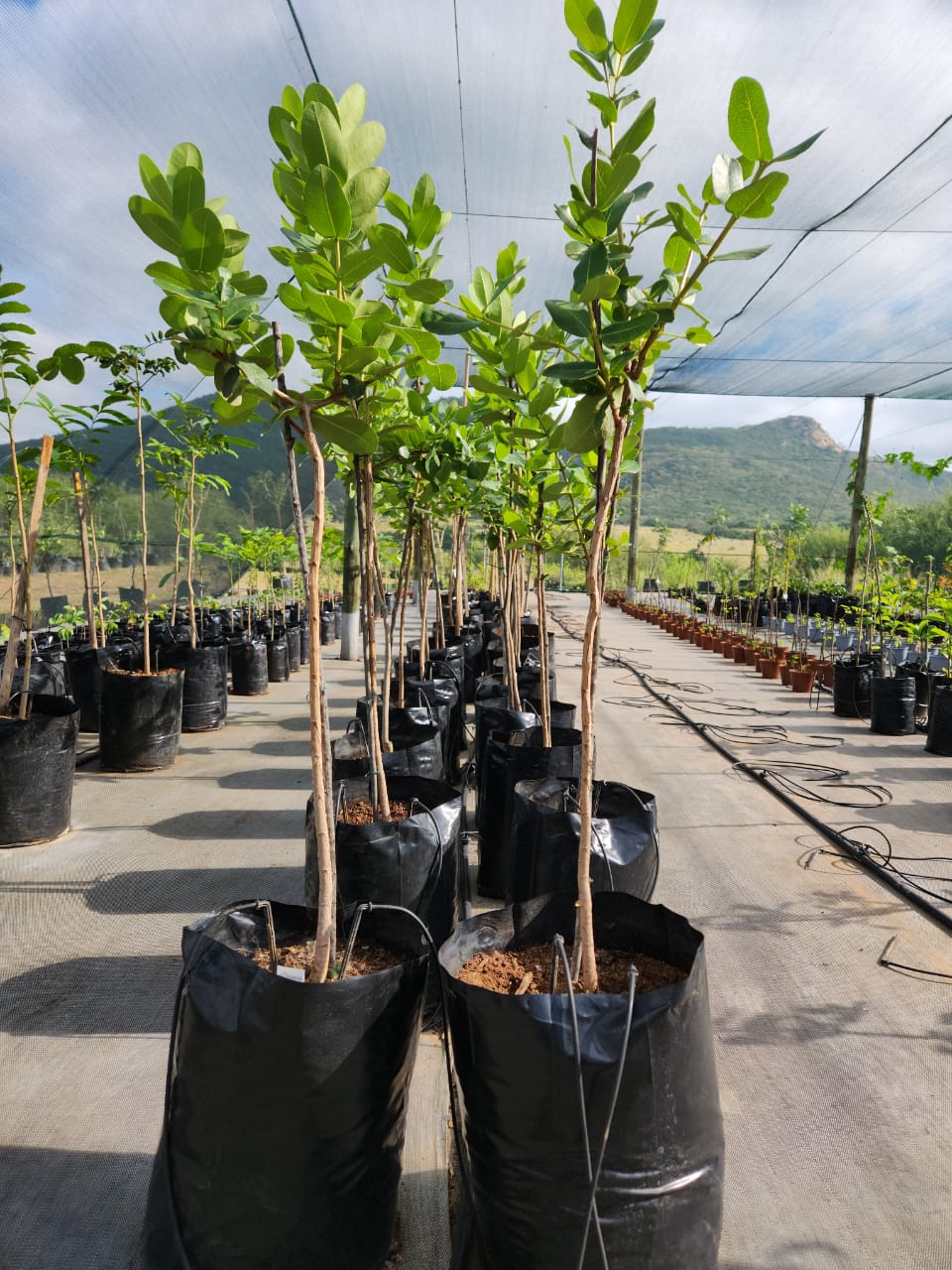Waterberry Tree (Waterbessieboom) #
Syzygium cordatum

Quick Info #
- Distribution & habitat: Kernia to Eastern Cape – next to streams in river forests and woods.
- Family: Myrtaceae
- Florescence: August to November
- Fruiting: November to March
- Leaf habit: evergreen
- Name origin: “Syzygium” is Greek for “connected”, referring to the coupled leaves and branches, and “cordatum” means heart-shaped.
- Other names: montlho (Northern Sotho), umdoni (Zulu)
Description #
Ranging between medium and large sizes (up to about 20m), the waterberry tree is easily recognized by its short-stemmed, elliptic to almost circle-shaped, blue-green leaves with heart-shaped bases and a leathery feel to them. Subsequent leaves sit in pairs on the branches, square across each other. The crown of the tree is roundish, and the trunk sometimes crooked.
The fragrant flowers lose their petals, allowing the beautiful clusters of white stamens to vivify the tree’s appearance. The ovoid berry, initially changing colour from green to red, is dark purple to black when ripe. A thin peel covers the edible flesh. The wood of the tree is very durable.
Uses & Ecology #
An alcoholic beverage is made from the berries. The berries are also said to have both magical and medicinal uses.
The powdered bark is used as fish poison, killing only small fish and turning the water blue. The bark also produces a reddish-brown dye.
Birds, bush pigs and primates eat the fruits. Many insects and birds are attracted to the nectar of the flowers. The leaves serve as larval food for some butterfly species, and food for game. An extract of the leaves is also used in the treatment of diarrhoea or as a purgative.
It is said that in KwaZulu Natal, the presence of the waterberry tree can indicate the potential to grow sugar cane in the area.
The wood is used to build boats.
References #
- Coates Palgrave, K. & P. & M. (1989) Die Suid-Afrikaanse Boomgids. Johannesburg: Central News Agency.
- Van Wyk, B & P. (1997) Field Guide to Trees of Southern Africa. Cape Town: Struik Publishers.
- Van Wyk, B. & P. (2008) Identifiseer die Bome van Suider-Afrika. Cape Town: Struik Publishers.
- Van Wyk, P. (1988) Veldgids tot die Bome van die Nasionale Krugerwildtuin. Cape Town: Struik Publishers.
- Venter, F & J.A. (2002) Benut on Inheemse Bome. Pretoria: Briza Publications.
Caution: Consult a qualified health practitioner before considering medically using or ingesting any plant parts. Any mentioned traditional uses are based on cultural practices and anecdotal evidence. They are not necessarily clinically proven or supported by modern scientific studies.